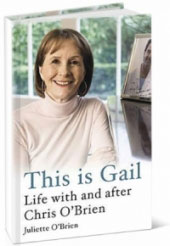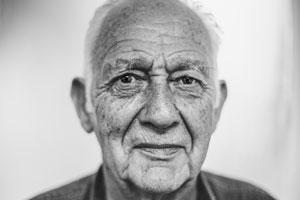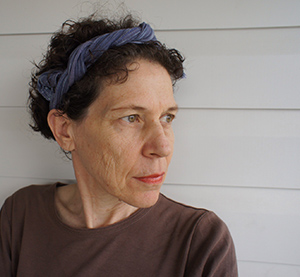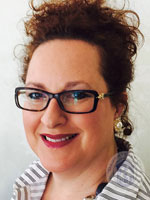I have a soft spot in my heart for Dr Chris O’Brien, having personally met him when he checked a friend’s throat for cancer. Like so many Australians I also enjoyed watching him on the TV series, RPA.
In 2009 Dr Chris O’Brien died from a malignant brain tumour. Two years later his 29 year old son, a Policeman, died in his sleep during an epileptic fit. Just as Dr Chris O’Brien educated us about medical issues so well through the RPA show, by sharing the details of how Chris died in her book, “This is Gail. Life with and after Chris O’Brien” I feel like Chris and his daughter Juliette are continuing to teach us about medical events.
Juliette spoke of her father’s death as going “terribly wrong” because of the suffering he endured and he didn’t die at home as he wished. Watching Juliette speak and read from her book prompted me to write these 11 tips for a pain-free death at home.
After having all possible interventions to prolong his life including 5 brain operations, Dr Chris O’Brien had accepted that further medical treatment would not be able to extend his life and he ultimately, decided he wanted to die at home.
The day after the Community Palliative Care Team had delivered an electric lift hospital bed, Dr O’Brien had a slight headache which “quickly became so excruciating that he could barely speak beyond a whisper.”
Gail, Chris’ wife rang his Oncologist who wanted him to have a brain scan. Chris replied “There’s no point … I’m dying. I need some morphine.”
The problem was, there wasn’t any morphine in the house because the Community Palliative Care Team had not yet returned with their treatment plan, nor brought the morphine which would have been prescribed for Dr Chris O’Brien when he experienced pain.
Gail rang Chris’ GP practice and asked for his Doctor to come quickly with morphine. When the doctor didn’t arrive, nor ring to say they wouldn’t be coming, Gail rang the GP Practice again. She was told that Chris’ General Practitioner was not working that day and the GP who was on, couldn’t come to see Chris because he had a room full of patients to see.

Recently, I watched Jane Hutchinson from ABC’s One Plus One interview Dr Chris O’Brien’s daughter, Juliette O’Brien (Episode 27, series 2016).
I admire Juliette’s strength talking about the death of her famous father and brother, as well as her book “This is Gail. Life with and after Chris O’Brien”.
In excruciating pain, Dr Chris O’Brien said to his wife “Don’t let me die in pain”.
Gail rang for an ambulance, they arrived but with they did not have morphine so the Paramedic rang for an Intensive Care Unit (ICU) ambulance. When the ICU Paramedic arrived, he refused to administer morphine unless Gail agreed to allow Chris to be transported to hospital straight after the morphine was given.
Gail explained that Chris wanted to die at home and showed the ICU Paramedic the hospital bed, explaining they were under the care of the Community Palliative Care Team. The ICU Paramedic again refused to administer any morphine unless Gail agreed to allow her husband to be transported directly to the hospital.
To get her beloved husband out of pain Gail had no choice but to agree that he could be taken to hospital.
Chris died the following day in hospital.
As Juliette said during the ABC interview, “We didn’t know Dad was going to die that day. I went to University”.
I felt sad when I listened to Juliette talk about how her Dad died as well as, when I read the details of the event in her book. I felt sad because Dr Chris O’Brien had helped so many people and his death was not what he wanted.
I know some people are afraid of dying in pain and within my research they express that one of their great fears about dying at home is that they will die in pain. I also know from evidence-based research that the vast majority of older people prefer to die at home with appropriate professional support, where they feel most comfortable – in their environment.
An Elderly person dying at home who has accepted the end is near,
and who has Daughterly Care on their ‘care team’ has a very different experience than Dr O’Brien.
11 Tips for dying at home pain free:
1. Dying in pain is a fear most people have, myself included. It is something talked about by advocates for the ‘E’ word. It’s really important to know that Daughterly Care Elders don’t die in pain at home because it is well managed by the Community Palliative Care Team, their GP and Daughterly Care’s High Care Case Manager and Registered Nurses.
2. We know from our experience that people don’t like to bring on board the Community Palliative Care Team until very late in the dying process, yet they can improve your quality of life and it generally “takes time or longer than you think to put systems in place”. At Daughterly Care, we suggest our clients get the Community Palliative Team on board sooner rather than later and set up the system before their service is needed.
The main point is, you don’t have to take any action until you are ready. The Palliative Care Team’s job is to maximise your quality of life, not reduce your life.
3. You need to be referred to the Palliative Care Team by your General Practitioner or a doctor from a hospital and you need to make an appointment with them to get the ball rolling. This takes time.

4. The Community Palliative Care Team’s workload is unpredictable and there isn’t a guarantee they can see you immediately. The Palliative Care Doctor and Nurse need to come to your home, meet the patient, decide a treatment plan and document that then return with the written plan.
5. To die well at home, equipment such as an electric lift hospital bed with an airflow mattress is needed. This can be provided free of charge by the Community Palliative Care Team but there is a waiting list.
Often our clients have rented or bought one prior to even contacting the Palliative Care Team because it enhances the client’s independence, improves their quality of life and makes it easier for their family and professional Carergivers to care for them at home.
So you can see why you need to get the Community Palliative Care Team on board earlier than the last day(s).
Department of Veterans Affairs (DVA) Gold Card clients are provided all equipment they need free of charge. More information for DVA Gold Card Holders.
6. The Palliative Care Registered Nurse needs to return to the client’s home, when the time is right i.e. when pain relief is needed, to install a syringe driver morphine pump that automatically delivers morphine via a very small butterfly needle into the thigh. At the same time, if it has been prescribed by the Palliative Care Doctor, “break-through pain relief” is also left in the client’s fridge. The family is shown how to administer it.
15 years ago, the Community Palliative Care Registered Nurses visited daily or as required to administer all schedule 8 medications such as morphine. Nowadays, the break-through pain relief is administrated by the family or a private Registered Nurse, such as a Daughterly Care Registered Nurse.
7. It is common that family members do not want to administer morphine to their parent. As a Son, who is also a doctor said to us recently, “I would rather your Registered Nurse administer the morphine, I just want to be the son”. Some Retirement Villages or Hostels have their “own rules that exceed how Palliative Care commonly works in the community.
Recently a North Shore Retirement Village said, if a client has a syringe driver morphine pump then their rule is that a Registered Nurse is required (rather than a Caregiver) be present around-the-clock, otherwise they insist the client / resident go to the hospital. Whereas we feel a palliative care experienced Caregiver is adequate to be able to monitor a pump, especially when they can ring Daughterly Care’s on-call Registered Nurse. The Daughterly Care Nurse can come out overnight or during the day, or the Palliative Care Registered Nurse can visit through the day.
8. Dr O’Brien’s death was faster than anyone had expected due to, how Juliette describes as most likely a ruptured blood vessel causing a bleed. This happened prior to the Palliative Care Team putting pain relief in place for him.
The lesson here is that dying is not always predictable (though dying of ‘old age’ does tend to be more predictable than when a younger person dies of cancer) and this is why when you have decided that you are no longer having curative treatment, it is best to get the Community Palliative Care Team on board. Once you are in their system and they have written their treatment plan, they can act proactively to follow it.
9. On the point of the GP or Doctor not being able to leave his practice… very occasionally a GP will say to our client who plans to die at home, that the Community Palliative Care Team is not needed.
We have had two younger clients die from cancer where both their General Practitioners’ have refused to bring on the Community Palliative Care Team. They both had pain that the GP could not bring under control in a timely fashion so we advocated for those two clients to go to hospital as no one should live or die in pain. As a result of those two experiences, Daughterly Care now declines to be on the care team for a client who wants to die at home, unless the Community Palliative Care Team is on-board. They are the End-of-Life care management experts.
10. In our experience of almost two decades – the Community Palliative Care Team are brilliant, committed and absolute specialists in their field. You can’t replace their experience of supporting people who are dying all day, every day. It’s a free specialist service, they are committed professionals and a great resource for the client, family and Daughterly Care.
11. The Community Palliative Care team do not provide the “personal care” that a palliative care client needs around the clock. Yes, they come to check the patient but they are not there 24 hours to provide personal care, turning, bed bathing, pad changing, mouth care that a dying person needs. When you choose to die at home, you are choosing to provide your Elder this personal care or to bring in private carers and nurses like Daughterly Care to provide part or all of the personal care. We can provide the care overnight so that family can sleep properly or we can be there around the clock so that the family can come and go as needed for their children or work.
An elderly person dying at home, who has accepted that the end is near and who has Daughterly Care on their ‘care team’ has a very different experience to Chris O’Brien.
Recently I sat with one of our clients, a dying Elderly lady who had no-one.

Her husband had died 15 years earlier of cancer and she had lovingly nursed him at home. She had no children or relatives, having immigrated to Australia after World War II.
I sat with her and despite having a couple of severe chronic diseases that had been causing her high levels of pain for over a decade, she held my hand and squeezed it and said “Kate, I want to live longer”.
At that point our lovely Registered Nurse explained to her, very gently and with her own lip quivering and holding back her own tears that… the difficulty she’d had a couple of times in swallowing thickened water was a result of her body shutting down. The nurse continued to explain that she would aspirate the fluid into her lungs again, which would feel like she was choking.
Our Registered Nurse gently explained to her that it was time to ring the Palliative Care Team because this would continue to happen and we didn’t want her to experience that uncomfortable choking feeling again. This client stoically said to our Registered Nurse, “I am in your hands. I will let you make the decision”.
The Palliative Care Team arrived the next morning …
As our client was already registered with the Community Palliative Care Team and her treatment plan had been done, as well as speaking to the client, a very small butterfly needle was inserted into the lady’s leg that administered morphine from a pump at regular intervals. The Community Palliative Care Team also left morphine that had been drawn up in syringes for Daughterly Care’s Registered Nurses to administer, as per the doctor’s orders. The morphine was in case the client experienced a higher level of pain and needed “breakthrough pain relief” i.e. PRN or ‘as needed’.
Our Live in Caregiver had moved our client into her sunroom for the last months, when she was increasingly confined to the bed. This gave her the joy of overlooking the beautiful garden she had created from scratch. In those final 6 months when she could not get out into the garden herself, she asked for dead flower heads to be cut and fresh flowers from her magnificent garden were bought in a couple of times a week for her to enjoy beside her bed.
In her final week, our client decided as she always did, what music she wanted to listen to. Our Registered Nurse called our Live in Caregiver multiple times a day and night to check on the client’s progress, as well as visiting twice daily to assist with turning, pad changing and bed baths.
The client’s passing was peaceful, pain-free and directed by the client.
It was, by all measures, a peaceful pain-free passing at home – exactly as she had wanted.
In 21 years, we’ve had three different client experiences to our usual end-of-life experience…
1. Two younger clients, who both had cancer, had GPs who would not allow the Community Palliative Care Team to come on board as they were going to manage the care. In those two cases the GPs did not have the expertise and the availability that the Palliative Care Team has. The clients were in pain so we recommended those two clients go to hospital to get their pain under control. They died in hospital.
2. A third client also had cancer but she was in her mid-30s. There was a lack of acceptance by her family that she was dying but the client knew she was dying. We knew her death could be painful and complicated because of where the tumour was and when she was hospitalised for an issue, we advocated that she should not return home without adequate pain relief. It was decided she would die more peacefully in hospital with more people to advocate for her.
The End of Life journey is definitely easier when you have a sounding board in place called the Daughterly Care Team and the Palliative Care Team to guide you through unfamiliar territory.
Enjoy your age, the people you love and the fact you are alive. Live every day in such a way that you experience joy each day.
Source 1 = O’Brien, J, 2016, This is Gail. Life with and after Chris O’Brien, The End, Chapter p. 151.


P.S. Award winning writer Cory Taylor, 61, died pain free at home on 5th July. Her final interview with the ABC is thoughtful, very informative and touching. It’s certainly well worth listening to CLICK HERE

Take care, until next time.
Kate
Kylie Lambert B.Ec F Fin
(known to her friends for 25 years as Kate)
Daughterly Care CEO, Co-Founder and Owner


Thank you for this information Kate – as palliative care doctor I feel so sad at this outcome, and agree with much of what you say.
I want to add one more important thing that people can do – for patients in NSW it is possible for their doctors (either specialist – their palliative care doctor – or their GP – it actually doesn’t matter who!) to organise an Ambulance Palliative Care Plan. This means that the paramedics have all the information they need about the patients plan of care – especially important if they want to die at home. They can administer pain relief, oxygen and some other medications in the home. They can also contact the palliative care team and let them know what is happening. If there is an Ambulance Palliative Care Plan organised, the paramedics don’t have to take the dying person to hospital after giving them morphine.
This is so important. Please encourage the doctors and patients you work with to use these plans. This story describes exactly the kind of situation which they are needed for.
Thanks so much for your comment Christine. I have had recent personal experience with the Palliative Care Team in Victoria and they were amazing. It’s such a sensitive time for everyone involved that their professionalism, compassion and calm attitude was such a blessing. I have great admiration for everyone who works in this field and really appreciate you sharing this information.
Thank you Dr Christine for your information about the Ambulance Palliative Care Plan…we do use these with our clients, though I forget to mention it. I will write another blog on this point. Thank you for reminding me. Kate
It’s very rewarding for family members to feel safe and cared for in there own home if that’s their wish at times like this.
Thanks for taking the time to comment Lorraine. No matter what the person’s wish, isn’t it great if we can honour them and try and make it happen fo them?
I read both his autobiography and his daughters book about Gail. Not a good end of life care plan in place unfortunately.
Hi Fiona, it sounds like you really enjoyed reading about Dr O’Brien. There are certainly lessons to be learned from their journey.
Thank you for your detailed, well-informed and beautifully-balanced article, Kate. The warmth, depth and genuineness of your caring shine through in every sentence. Daughterly Care is well named, and it’s clear you know what you’re talking about. I lost my father (aged 83) to an agressive mouth cancer (squamous-cell carcinoma) a few months back. Dad died at home, with his family around him, and it was just an amazing blessing for him, for Mum and for all of us, his children and grandchildren. I know it’s not possible in every case, but why would a ‘declining’ elder want to be anywhere else except in their own home.
My blood began to boil when I read your description of how Dr O’Brien was basically forced out of his home and made to die in a hospital. With Dad, too, there was a lot of pain in his last few weeks. Initially, neither Dad nor Mum wanted anything to do with palliative care. They didn’t want strangers invading their little sanctuary and telling them what to do, taking away their freedom and their dignity. But we managed to convince Mum to make an appointment, go through the formal requirements and at least have palliation on standby if it was needed. It is just as you described it, Kate. And dad certainly DID need it for a few weeks.
The palliative nurses were wonderfully helpful and unintrusive. They even showed me how to administer the breakthrough painkiller when required. Dad bore as much pain as he could because he wanted to be with his family in those precious last days and not bombed out of it all the time. If the pain became too much, he would simply tell us and we gave him the morphine relief he needed. I think, between us, we got the balance pretty right. Yes, it was painful for all of us and sickness is terribly ugly and the days and nights were long, but those moments when he was lucid, and even boyishly playful, were, and remain, a treasure. No one, absolutely no one—no doctor or paramedic or policy maker has the right to deny us the privilege of being at home and with family to the very last breath.
And one other thing I want to share: I was speaking to a priest, a young French man, just after Dad died, and we were discussing funeral arrangements. The priest made a comment about how strange our burial practices are here in Australia. When I asked him what he meant, he told that in France, or at least the town he came from, family members and friends would lower the coffin into the ground using ropes, instead of the machines that we use here. He found this concept strange and very impersonal. And do you know what, that’s exactly what my brothers and I did. We told the undertaker we wanted to lay Dad to rest ourselves, with our own hands, and with these same hands we filled in the grave, too. There is real closure in that. It was the best thing we could have done.
Thank you, once again.
It’s interesting how different cultures have different funeral traditions. The best we can do is try and respect the wishes of the person who has passed and each person find their own way to managed their grieving. Thanks so much for sharing Francis.
Hello Francis
Thank you for your kind words and also for sharing so beautifully your Dad’s experience of living those final weeks and dying.
I understand your father preferring to endure some level of pain than being “bombed out” so that he could be with you for those weeks, days, hours and last lucid minutes because this is exactly what Verlie’s mother chose.
Verlie’s Mum would not take the level of morphine that the Community Palliative Doctor had prescribed, she had advanced lung cancer and was in her 70s. She told the Dr at the hospital that she WAS for resuscitation because as she said “I can still see my children”. I admired her tenacity!
Each of her grand children laid in her double bed next to her and they told her what a wonderful loving grandmother she had been. She told them how much she loved them and how special they were. It was such a special time. They each had their time where the focus was just on them. It was indeed quality special time.
When the time was right for Verlie’s Mum she allowed the correct dose of morphine to be given.
Three hours before she died, she asked to get out of her hospital bed in her bedroom and she sat in her arm chair, ate watermelon that she loved and sat with all her family in the lounge room watching a music talent show – they debated who would win. Three hours later she passed over.
And yes, the carrying of the coffin, the lowering, the burying – all great ways to physically show respect. Thank you Francis for sharing your journey. It will be insightful for many. Kate.